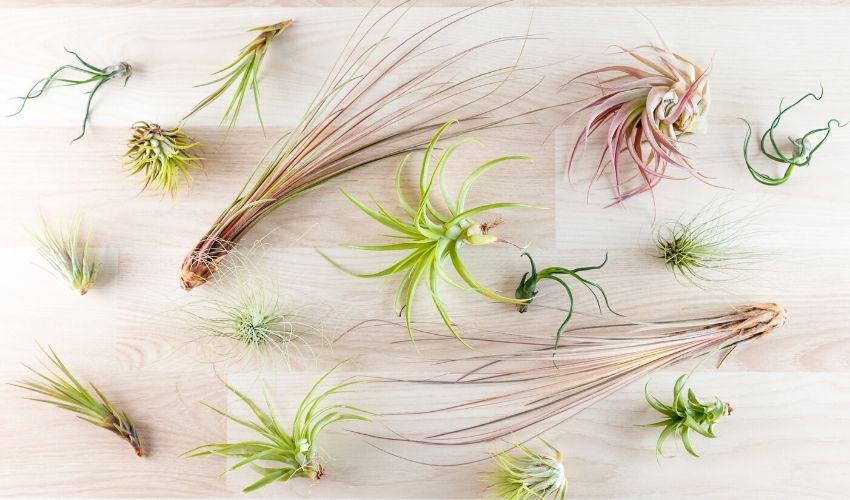Your Guide to Air Plants and Air-Purifying Plants
Feb 19th 2021

Houseplants are a beautiful addition to any décor, and they can serve several practical purposes as well. Understanding air plants and air-purifying plants can help you choose the best houseplants to incorporate into every room of your home.
Benefits of Houseplants
Houseplants are more than just pretty, living decorations. They provide a connection to nature in any space, which can lower stress and anxiety while boosting mood and productivity. Plants freshen the air through filtering carbon dioxide and removing airborne toxins and odors, and they can lower the amount of dust and mold in the air to help alleviate allergies. Plant improve indoor humidity, and create a natural sense of peace. With so many benefits, every living space and workspace should make room for plants.
About Air Plants
Air plants are some of the trendiest plants to have in your home, and for good reason. These popular plants are easy to grow and care for, and because they don’t require soil, they don’t need large, heavy pots or broad growing spaces.
There are hundreds of species of airplants – tillandsias – available. They often have thin, grass-like or tentacle-like leaves that grow in a rosette pattern, and often form spikes or graceful curves. These plants come in a range of colors, from silver and lighter shades to all types of green hues, and some are even edged in red, orange, or yellow.
Tillandsia plants need regular watering, typically every 1-2 weeks. Because these plants don’t have extensive root systems to take up water – their few, thin roots are only to anchor themselves to a surface – they take in moisture through the humidity in the air. Most homes are much drier than tillandsias’ typical outdoor habitats, however. To water these plants, submerge them completely in room temperature (neither cold nor warm) water for 20-30 minutes, then take them out, gently shake off excess water, and allow them to dry naturally.
Air plants prefer warmer rooms, but are comfortable in most household temperatures. They require bright but indirect sunlight, similar to the shade under a tree canopy where these plants naturally thrive. These are often popular plants in terrariums or glass containers, and they can easily be attached to a wide variety of surfaces, including driftwood, magnets, rocks, cork, and other materials. This makes tillandsias very versatile for different design preferences, and it is easy to incorporate them into any home décor.
Other Top Air-Purifying Plants
Many other plants have superior air-purifying properties and can be attractive additions to any home. While different plants all have different exchange rates for filtering the air, some plant varieties with the best filtration habits and easiest indoor care needs include:
- Aloe vera
- Areca palm
- Boston fern
- Chinese evergreen
- Chrysanthemums
- Dracaena
- English ivy
- Flamingo lily
- Golden pothos
- Peace lily
- Philodendron
- Rubber plant
- Snake plant
- Spider plant
- Weeping fig
- Choosing Air-Purifying Plants
When choosing plants to purify the air in your home and beautify your space, remember the plant’s basic needs. If you prefer a cooler home, opt for plants that can thrive in lower temperatures. If your home has small windows and lacks an abundance of natural light, choose low-light plants or shade cultivars. Plants that need high humidity to look their best should be kept in bathrooms or near a kitchen sink, while plants that thrive in drier areas can be best throughout your home. Also note that some plants can be toxic if they are rubbed on or ingested, which is an important consideration if curious pets or children are part of your family.
Before you choose a plant, learn a bit about its needs, including any susceptibilities to pests, special grooming or pruning requirements, and what its mature size may be. Understanding your plants better will help you choose varieties you not only enjoy, but that you can help thrive.
How Many Plants Do You Need?
There’s no wrong number for how many air-purifying plants to have in your home. For the best results, you should have one medium-sized (8-10 inch pot) plant for every 100 square feet of space. If you prefer larger plants with bushier foliage, a smaller number of plants can give you the same benefits, but if you like small, compact plants best, you may want to enjoy more of them. Any plants you have, however, can bring you innumerable benefits and help brighten your home, office, classroom, or any living space.

